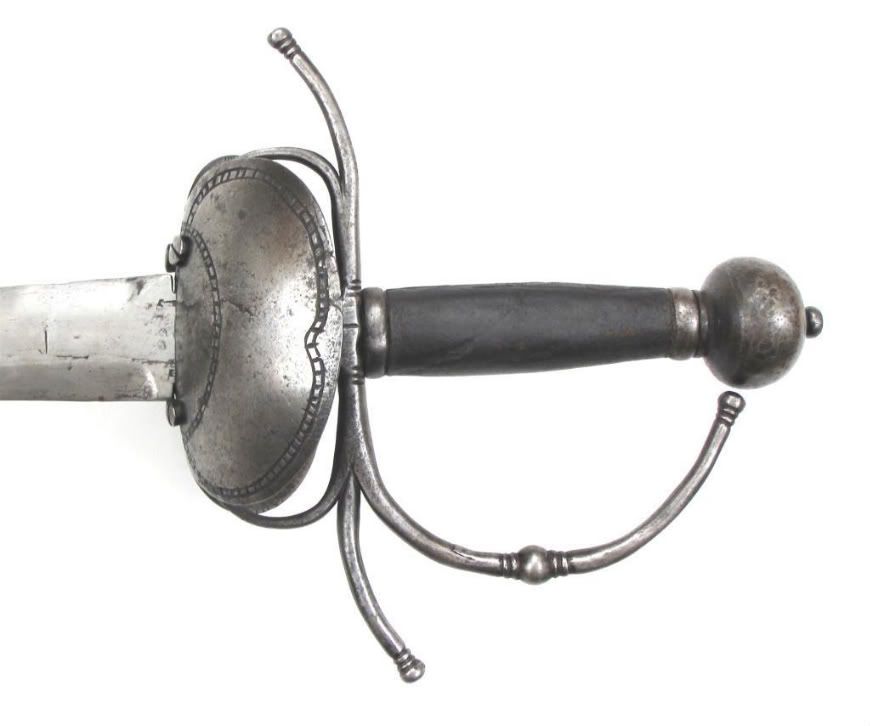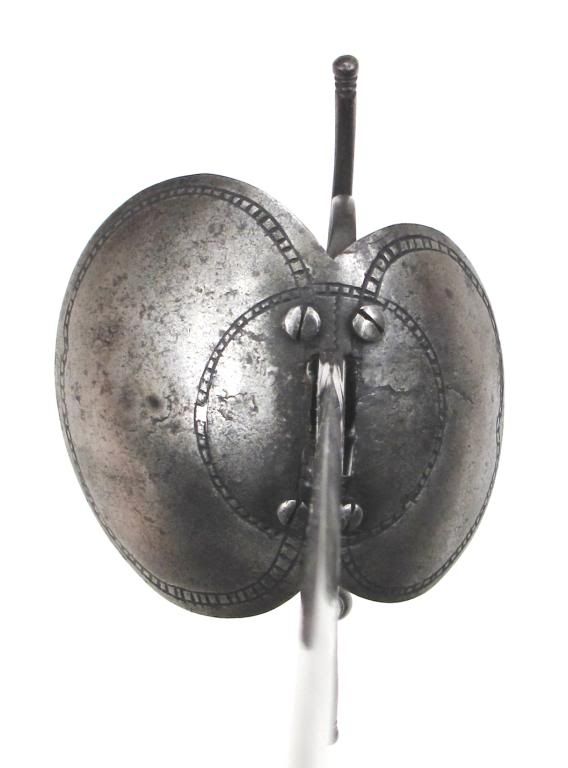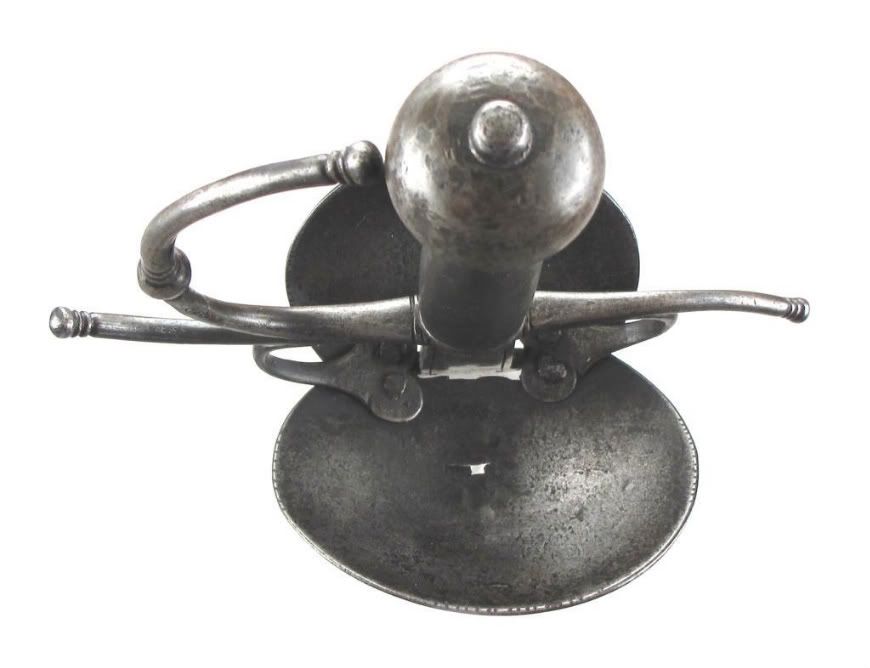
 |
|
|
#1 |
|
Member
Join Date: May 2010
Posts: 20
|
I purchased it at the Baltimore auction. Is it a 1728?
All I can say is that everything is as tight as a drum, and it looks to have never been taken apart. The peen is consistent with the rest of the pommel. Is the "NMN" on the blade a maker?   
|
|
|

|
|
|
#2 |
|
Arms Historian
Join Date: Dec 2004
Location: Route 66
Posts: 9,957
|
Carl, sorry I didnt notice you posted this here as well as on the cuphilt thread Fernando posted. They do make a great cross reference on that thread so for those interested I would recommend viewing that one as well.
As I noted on that thread, this is a great example of the Spanish military sword of the 18th century commonly termed the 'bilbo'. With the elongated triangular profile blade of flattened hexagonal section, it appears to be of the earlier years of the 18th century, though the hilt style is more associated with the later regulations. While typically thought of as a 1728 pattern, these were not necessarily established as a pattern in that year, though they were apparantly in use at the time. The N M N is an acronym reflecting a religious invocation, which was a traditional practice which dates back further to the medieval period in swords throughout Europe, in this case typically Latin phrases. These bilbo type swords were typically used by officers throughout Spanish Colonial frontiers, and numbers of them are known to have been used in Spanish regions of Florida, Louisiana and Cuba. All best regards, Jim |
|
|

|
|
|
#3 |
|
Member
Join Date: May 2010
Posts: 20
|
I was told on another forum that the grip is too long and that the originals had wire wrap with metal ribs. Mine has a very old leather grip. The grip alone from metal ring to metal ring, without the pommel, is 3.75 inches long. As for the knucklebow, it seems to be uniform in shape with no hammer marks, heat marks or deformations. The pommel shape, peen, and overall grip length seem to me to be identical to the antique 1728 on top in the pic:
 Note that I emphasized "overall" grip length, because the 1728 in the above pic has a neck on the pommel that makes up for the shorter grip. Mine seems to have the same exact pommel, but without the neck, hence the longer grip. Overall, from quillons to pommel, both sword grips look to me to be about the same in length. What do you think? As a collector, I can tell you that the sword is as sturdy as any sword I have held. As a classical and historical fencer, I can tell you that the sword is definitely functional in weight and balance. Everything is tight and in place. The age of the foxing and patina on the guard and pommel are consitent with its supposed age, and it seems the peen matches it perfectly, for what that is worth. Here are some better pics:       
|
|
|

|
 |
|
|